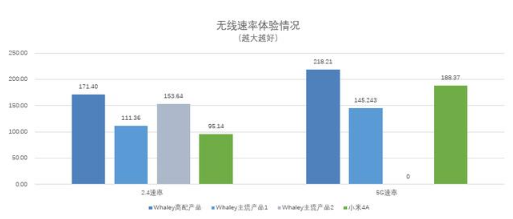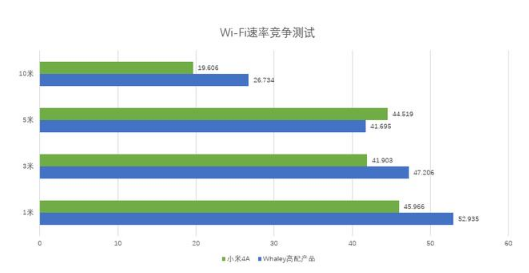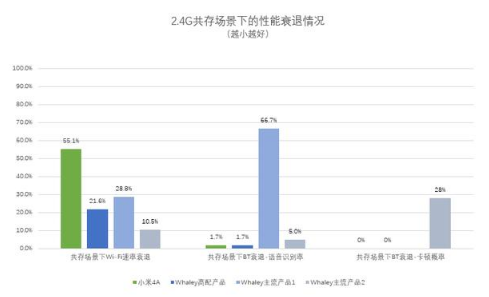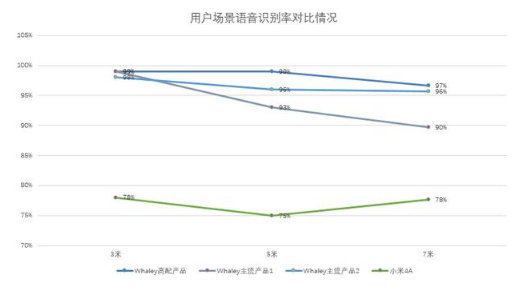Not more than half of 2017, Internet brand TVs have held press conferences to promote new products. This year, they all revolved around a common point to promote - speech recognition. If you have a longer-term understanding of Internet brand TV, you will find that the "voice" function is not new, but after emphasizing "intelligence", it has a new explosion point. The technical optimization of speech recognition has never stopped. I remember that when I used Microsoft Office 2003, I have already added local speech recognition technology. At that time, speech recognition not only had to "learn" in advance, but the recognition accuracy and speed were not satisfactory. Then, Apple Siri began to accelerate the popularity of speech recognition in mobile applications. For the voice recognition of TV products, there are mainly three aspects. On the one hand, it is the hardware foundation, including whether the underlying hardware can correctly record voice data, and whether WiFi+BT transmission is reliable. The second one is speech recognition technology. At present, most of the underlying speech recognition is provided by several companies, such as Keda Xunfei, Sogou, and go out. In theory, as long as the same technology supplier is used, the accuracy of speech recognition will not be biased. too much. The third is the optimization of the TV system, allowing speech recognition to have more applications. In order to verify the difference in speech recognition, we found a comparison of 3 TV products including Xiaomi TV 4a and micro whales. Let's first take a look at the WiFi+BT hardware specifications for 4 TVs: From the table we can see that in the basic specifications, Xiaomi TV 4A and Micro Whale TV are equipped with 802.11AC protocol wireless network card, and support Bluetooth 4.1+. The micro whale mainstream TV model 1 supports the 802.11n wireless protocol and supports 2.4G+5G transmission. Micro-Whale mainstream TV 2, supports 802.11n wireless protocol, only supports 2.4G transmission. The chip models used are: Whaley high with products: BCM43569 module Whaley mainstream product 1: BCM43242 module Whaley mainstream product 2: RTK8192 module Millet 4A: BCM43455 module From the overall specification table, many netizens see this will feel the millet TV 4A wireless configuration specifications to kill the rhythm of the same level products. But if you look closely, Xiaomi TV 4A actually uses a single-transmitted 1T1R antenna design! . The other three comparison products are designed with dual-issue and dual-receipt. Where is the single-issue single receipt insufficient? Let's take an example. Even if the Xiaomi TV 4A wireless network card uses a Ferrari-class chip, it is like the Beijing Second Ring Road in the morning and evening peaks. In the case of WiFi Bluetooth coexistence, data congestion cannot be effectively transmitted. Micro-Whale mainstream TV 2, although only 2.4G 802.11n wireless network card, but due to the dual-issue dual-receipt design, due to "no traffic jam on the road", the transmission speed is more stable and faster. Of course, this is only speculation, so we moved all the TVs into the shielded room and conducted the actual test of the network signal. (Thinking about the weight of four TVs, the babies are very hard.) The test mainly consists of two parts: Shielded room environment. - Used for comparison of basic rate data and analog pull distance comparison test; the topology diagram is as follows, PC and TV are in the same LAN segment, and the PC connects to the AP through the network cable to verify the basic performance in this case; AP configuration: 11abgn/ac mixed, bandwidth ATUO, channel auto Install IxChariot on the PC side and Endpoint on the TV side; TCP, Throughout script, configure 3 groups of the same Pair; (4) The antennas of the AP are parallel to each other and vertically horizontally upward; angle: 180° 2. Simulate the user environment. A comparison test of user competition and coexistence scenarios, we found an office to construct a simulation of the home user environment. AP is in the middle of the machine to be tested, adjust the distance Set 3 Pair PC with Chariot. Test 1: Shielded room millet wireless transmission almost completely collapsed First tested the wireless rate transmission situation (the bigger the data, the better), we see that at 2.4G frequency, the WiFi transmission of Xiaomi TV 4A presents a disadvantage, not as good as the three products of Wei Whale TV. In the 5G test environment, the micro-whale mainstream TV 2 does not support 5G transmission, and the 802.11AC protocol Xiaomi TV 4A is superior to the 802.11n micro-whale mainstream TV product. In the pull distance test, we used laboratory attenuation instead of the pull distance test. From the experimental data, the millet is slightly lower than the micro-whale mainstream scheme, the micro-whale high-matching scheme is 10 meters + (6dB); at the steady rate (the rate is controlled within 90% compared to 0dB), the millet is slightly smaller than the micro-whale scheme. 2 meters (5dB) from the distance. Rate test 5G: Micro Whale High Products > Millet 4A > Micro Whale Mainstream 1 2.4G: Micro Whale High Products > Micro Whale Mainstream Products 2 > Micro Whale Mainstream Products 1 > Millet 4A Test 2: In the real environment, Xiaomi TV 4A wireless signal is not as good as the micro whale TV high with products This test is a test of the home scene. 1 meter / 3 meters to simulate a typical living room scene, 5 meters for the bedroom scene, 10 meters for the ultimate wall scene. Let's first take a look at the results of the comparison between the two models of Xiaomi TV 4A and the micro-whale high-definition TV: Xiaomi 4A is less competitive than the micro-whale at about 1 meter and 3 meters, about 80%. In the 5m environment, it is better than the micro whale product, but it is 30% worse than the micro whale product at 10m distance (consistent with the stable rate pull-down test conclusion) Adding Bluetooth coexistence experiments, Xiaomi's entire scene is not competitive with micro whales. However, the coexistence decay, the rate of the corresponding distance between the micro whale and the millet has declined, the millet has a greater recession, and the coexistence performance is not as good as that of the micro whale. Limit pull distance test: Micro Whale High Products>Micro Whale Mainstream Products 2>Micro Whale Mainstream Products 1>Millet 4A Then we compare the performance degradation of the next four TVs when WiFi and Bluetooth are transmitted simultaneously. In the 2.4G coexistence scenario, when BT is long voice, the experience of Wi-Fi declines, and Xiaomi 4A is the worst. The impact of more than 50% (1T1R), followed by the common Rx program of the micro-whale mainstream 2, affecting nearly 29%. This proves our previous prediction of a single-issue design failure. (The loop is blocked!) Performance at the same time of transmission: Micro whale high with products> Millet 4A> Micro whale mainstream products 1 Whether the lack of WiFi+BT performance will affect, we also supplemented the test for speech recognition. Xiaomi TV 4A and Wei Whale TV both emphasize speech recognition technology. The former provides technical support by going out to ask and Sogou, and the micro whale TV speech recognition technology. It is from the University of Science and Technology. We measured the contrast of speech recognition rates within the range of 3 meters, 5 meters and 7 meters. From the results, the millet 4A is slightly inferior to the micro whale products, with a gap of 20%. Wireless is a technology trend, and more products and technologies will be realized in a "wireless" way in the future. As a TV product, the wireless method can make the periphery of the TV more beautiful. The "rice line" in Xiaomi TV needs to solve the constraint of the cable. Unfortunately, Xiaomi TV 4A has obvious shortcomings compared to this comparison of micro-whale TV. The real voice service should be comprehensive optimization from hardware to software.
ZGAR FILTER TIP
ZGAR electronic cigarette uses high-tech R&D, food grade disposable pod device and high-quality raw material. All package designs are Original IP. Our designer team is from Hong Kong. We have very high requirements for product quality, flavors taste and packaging design. The E-liquid is imported, materials are food grade, and assembly plant is medical-grade dust-free workshops.
Our products include disposable e-cigarettes, rechargeable e-cigarettes, rechargreable disposable vape pen, and various of flavors of cigarette cartridges. From 600puffs to 5000puffs, ZGAR bar Disposable offer high-tech R&D, E-cigarette improves battery capacity, We offer various of flavors and support customization. And printing designs can be customized. We have our own professional team and competitive quotations for any OEM or ODM works.
We supply OEM rechargeable disposable vape pen,OEM disposable electronic cigarette,ODM disposable vape pen,ODM disposable electronic cigarette,OEM/ODM vape pen e-cigarette,OEM/ODM atomizer device.
Vape Filter Tip,ZGAR Filter Tip Disposable Pod Vape,ZGAR Filter Tip Disposable Vape Pen,ZGAR Filter Tip,ZGAR Filter Tip Electronic Cigarette,ZGAR Filter Tip OEM vape pen,ZGAR Filter Tip OEM electronic cigarette. Zgar International (M) SDN BHD , https://www.szvape-pen.com





